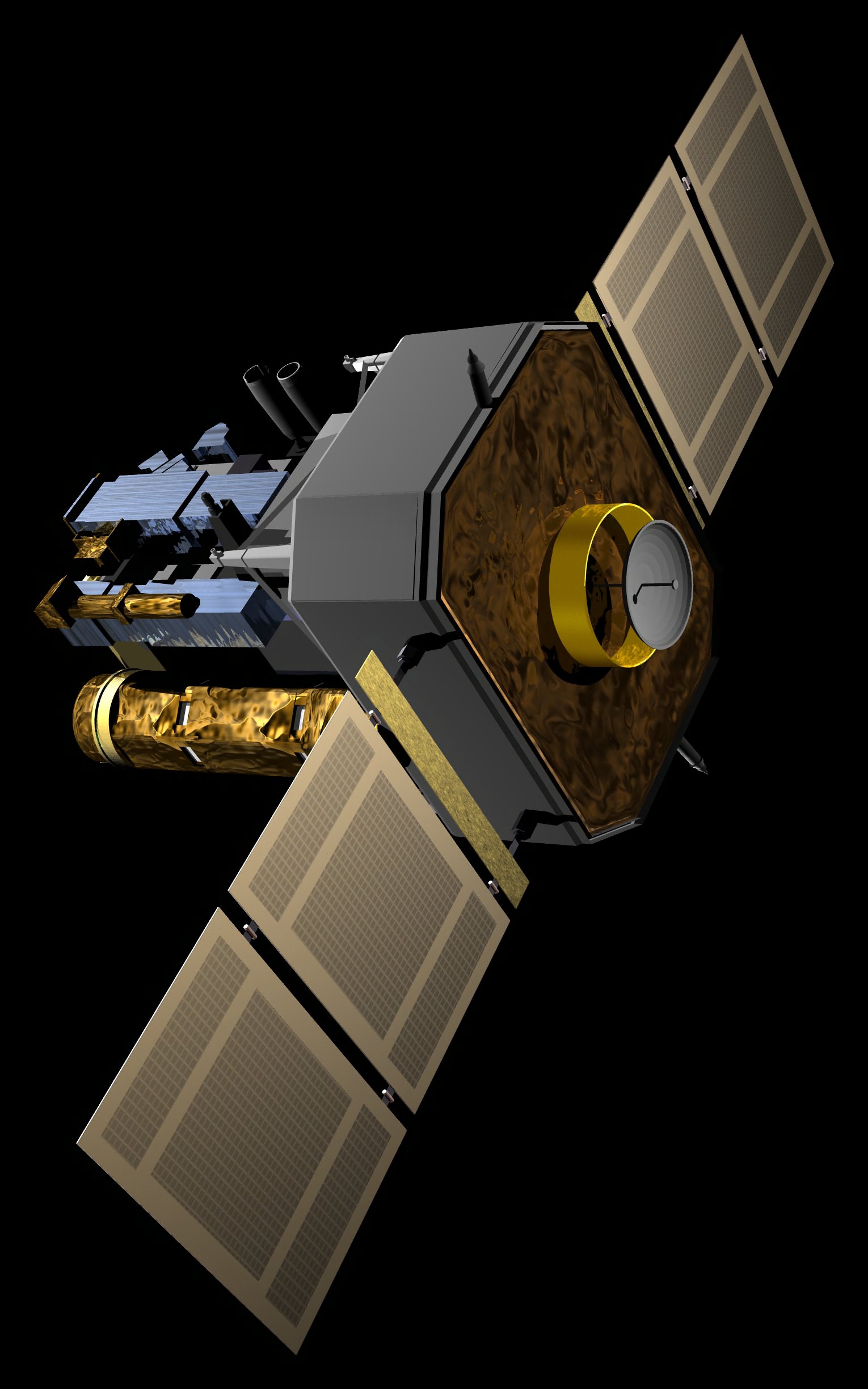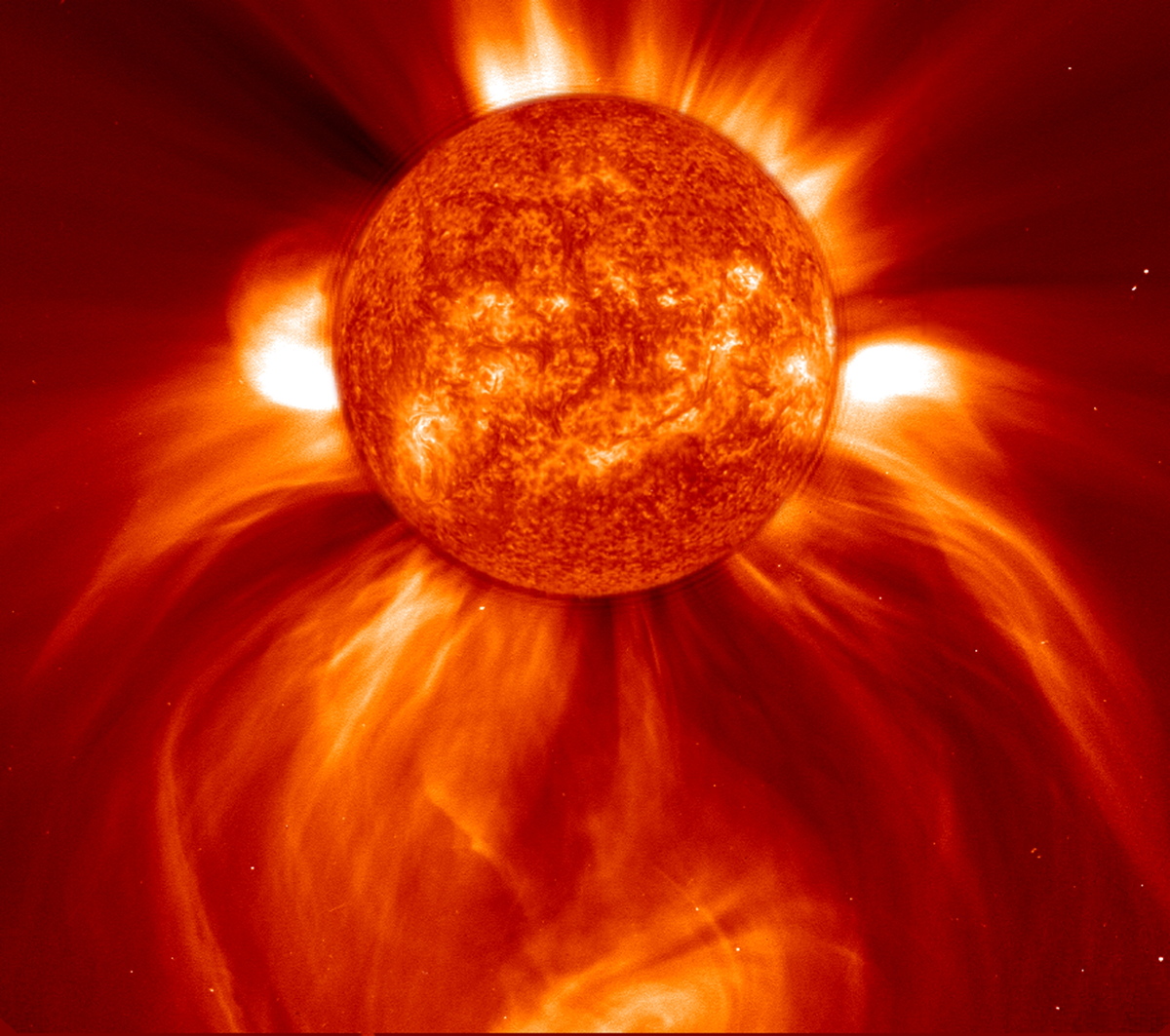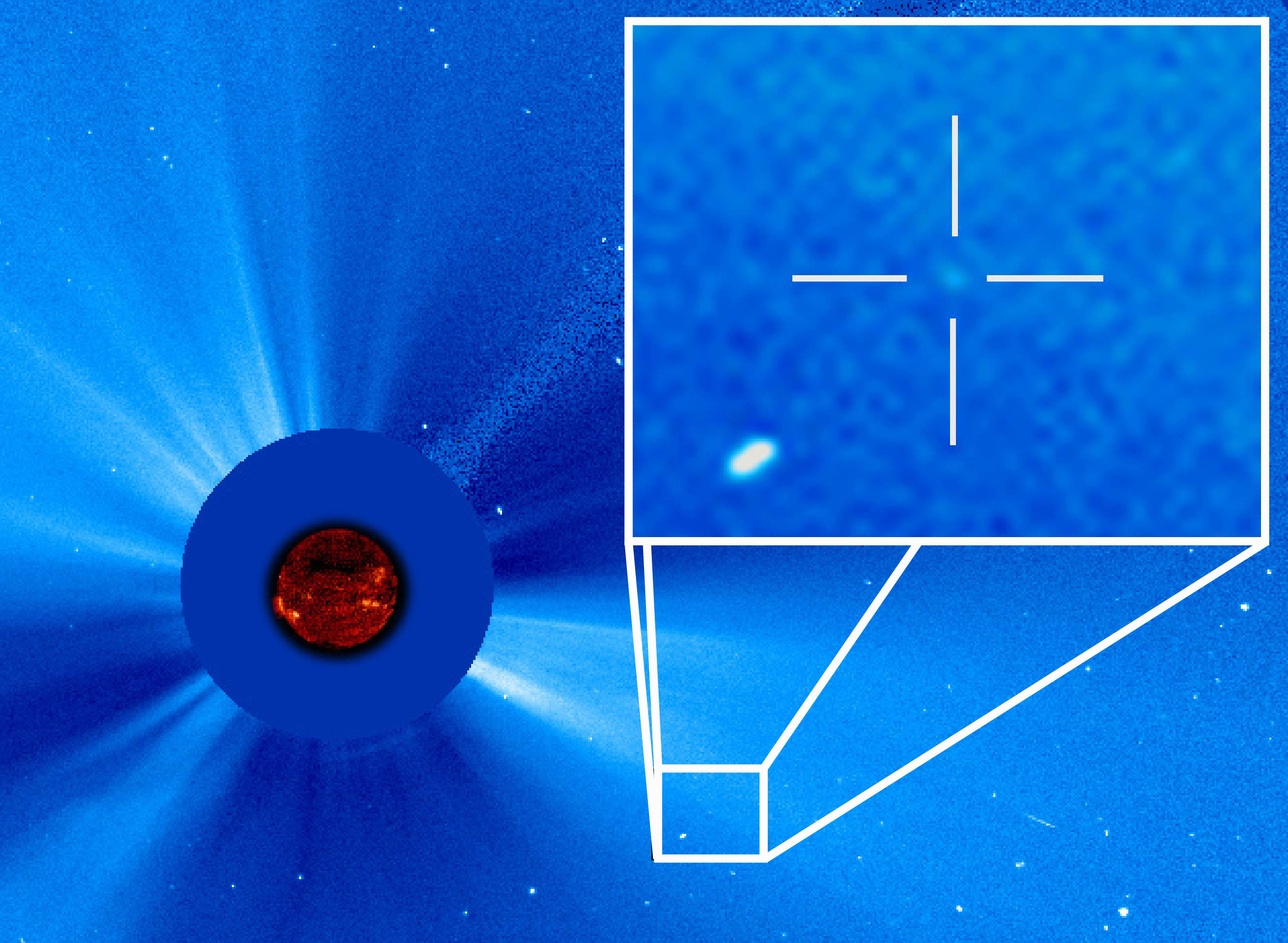SOHO: Spying on the sun

The Solar and Heliospheric Observatory (SOHO) is a satellite that keeps an eye on the sun's activity. It's a joint mission between NASA and the European Space Agency and has been operational for more than 20 years.
While watching the sun's activity, SOHO has produced some discoveries about how the sun works. According to ESA, its chief discoveries include finding complicated gas currents below the sun's visible surface, as well as tracking frequent changes in magnetic fields.
Researchers came close to losing the spacecraft in June 1998, less than three years after launch, after a routine gyroscope calibration. SOHO was in the wrong position to receive communications from Earth, and was not responding to commands.
It took about three months to recover, and the spacecraft lost two gyroscopes as a result. Then SOHO's last gyroscope failed, forcing mission managers to develop a new way of keeping SOHO stable.
SOHO is also a tool in discovering comets, even though it wasn't designed to do so. As of November 2012 the satellite had spotted around 2,400 comets, with new ones (on average) found about once every 2.6 days. Many of those comets were discovered by amateur astronomers downloading images from the SOHO website.

Long-term look at the sun
The energy of the sun keeps Earthlings alive, but that security comes with a price. The sun — although a relatively stable star by celestial standards — is an active ball of gas. Eruptions from the sun's surface frequently stream toward Earth.
Mild eruptions can cause auroras, and more violent eruptions can disrupt satellite communications and power grids. One notorious example was a massive blackout in Quebec in 1989, which happened after a solar eruption.
ESA, in partnership with NASA and several research institutions, was interested in launching a spacecraft that could keep its eye on the sun at all times. The goal was to better predict "space weather," and to understand more about how the sun works.
Scientists would place the $1.27 billion SOHO in an orbit around the Lagrange L1 point — an area in space where the gravity of the sun and the Earth balance each other out.
SOHO launched Dec. 2, 1995, from Cape Canaveral, riding an Atlas II rocket. About two hours after launch, the upper stage of the rocket put SOHO into a transfer orbit. It took four months for the satellite to get to its destination, which is about 932,000 miles (1.5 million kilometers) from Earth.
Interesting sights came from SOHO in the first few weeks of operations. Although SOHO launched at a quiet time in the sun's cycle of sunspot activity, the spacecraft spotted emission jets emanating from the sun in spring 1996.
"SOHO's scientists are impressed by the vigorous action that they see going on every day, because the sun is in the very quietest phase of its 11-year cycle of activity," ESA wrote in a May 1996 press update.
"To ground-based observatories, [the sun] appears extremely calm just now. The early indications of SOHO's performance amply justify the creation of a sungazing spacecraft."
'Calamitous' loss of SOHO
In June 1998, SOHO was just at the beginning of its extended mission when, in the words of a review board, "a calamitous sequence of events" led to controllers losing track of the spacecraft after a routine gyroscope calibration.
SOHO experienced a "loss of attitude control, subsequent loss of telemetry, and loss of power and thermal control," the board said. This meant that the people on the ground could not control SOHO and could not get any information about its status. Worse, the spacecraft was spinning in such a way that it was being heated unevenly; also, SOHO's solar panels could not recharge its batteries.
Worried controllers spent a month sending signals to the spacecraft and waiting in vain for a response. In July, they found SOHO by using a large radio telescope at Arecibo, Puerto Rico. The radar echoes off of SOHO showed the spacecraft was spinning.
"With hindsight, mission experts know that SOHO was turning once every 53 seconds, with the solar panels edge-on to the sun," NASA later wrote in a press release.
"These were the worst possible conditions for receiving power from sunlight. Instruments on the side of the spacecraft facing the sun were being baked, while others on the shadowed side were losing heat to deep space."
Recovering the spacecraft
Fortunately for controllers, SOHO's position relative to the sun changed slightly every day as the spacecraft orbited Earth's nearest star. On Aug. 3, 1998, SOHO called back to Earth when enough sunlight crossed the spacecraft's solar panels.
Carefully, controllers thawed out SOHO's frozen fuel inside of its thrusters and recharged the batteries. By mid-September, SOHO was once again pointing in the right direction. Two of the three gyroscopes had failed, but the rest of its instruments appeared to be fine.
On Dec. 21, 1998, however, the last gyroscope broke. Controllers used hydrazine fuel in the thrusters to keep SOHO pointed in the right direction, but they were using quite a bit of it — 15 pounds (7 kilograms) a week, on average.
In January, SOHO controllers changed the spacecraft's software so that it could operate without gyroscopes and use other tools on the spacecraft to figure out its attitude. This reduced fuel usage and allowed normal observations to continue.
SOHO had 396 lbs. (180 kilograms) of fuel left when the gyroscope failed. That dwindled to 326 lbs. (148 kg) by the time the new software was in place.
SOHO discoveries
Five years after SOHO's launch, it was already altering our view of how the sun worked. In 2001, ESA announced that SOHO researchers were giving storm watchers an extra week's notice of eruption risks. One spacecraft instrument can see through the sun to the backside, while another one can sense activity through ultraviolet emissions.
Also, SOHO saw the sun get brighter as sunspot activity increased, watched gas currents whisk below the sun's surface, and analyzed the elements coming out of the "solar wind" — the continuous stream of particles from the sun that bleed into space.
Perhaps its most important discovery was probing how coronal mass ejections (large amounts of ionized gas) form a space "highway" that sends energetic particles through space. The more we know about these particles, the better able we'll be to protect astronauts and infrastructure such as power grids.
Because SOHO has been watching the sun for so long, astronomers have been able to watch the sun through more than one of its 11-year sunspot cycles. These long-term observations of the sun are intended to improve the accuracy of space weather forecasts.

Corralling comets, and more
Because so many comets are drawn toward the sun, SOHO inadvertently ended up being a tool for comet hunters. In September 2015, the spacecraft discovered its 3,000th comet —making it by far the most prolific comet discoverer to date. Many of these comets have been spotted in images by amateurs,
"I am very happy to be part of a great milestone for SOHO's comet project," amateur Worachate Boonplod of Thailand, who discovered the 3,000th comet, said in a statement at the time. "I would like to thank SOHO, ESA and NASA for making this opportunity possible, including other fellow comet hunters who I have learned a lot from."
One of SOHO's most famous comet-hunting moments came around Thanksgiving in 2013. The spacecraft was on the watch for Comet ISON, which was discovered the year before. The comet's size, brightness and proximity of the sun had sky-watchers hoping that ISON would put on a spectacular show late in 2013.
Alas, the comet disintegrated shortly after its closest pass by the sun. Astronomers watching with SOHO, however, were astonished to see the pieces briefly brightening before fading away again. Later analysis of the images suggested (although scientists aren't exactly sure) that the brightness eruption came from the final breakup of the nucleus or heart of the comet.
SOHO is also, of course, performing solar science. Among its findings in 2015 were helping to explain some puzzling findings that Voyager 1 noticed when leaving the solar system in 2012. SOHO and other spacecraft helped explain changes in magnetic field Voyager 1 detected, which appeared to shift with changes in the solar wind.
Additional resources
Join our Space Forums to keep talking space on the latest missions, night sky and more! And if you have a news tip, correction or comment, let us know at: community@space.com.
Get the Space.com Newsletter
Breaking space news, the latest updates on rocket launches, skywatching events and more!

Elizabeth Howell (she/her), Ph.D., was a staff writer in the spaceflight channel between 2022 and 2024 specializing in Canadian space news. She was contributing writer for Space.com for 10 years from 2012 to 2024. Elizabeth's reporting includes multiple exclusives with the White House, leading world coverage about a lost-and-found space tomato on the International Space Station, witnessing five human spaceflight launches on two continents, flying parabolic, working inside a spacesuit, and participating in a simulated Mars mission. Her latest book, "Why Am I Taller?" (ECW Press, 2022) is co-written with astronaut Dave Williams.










